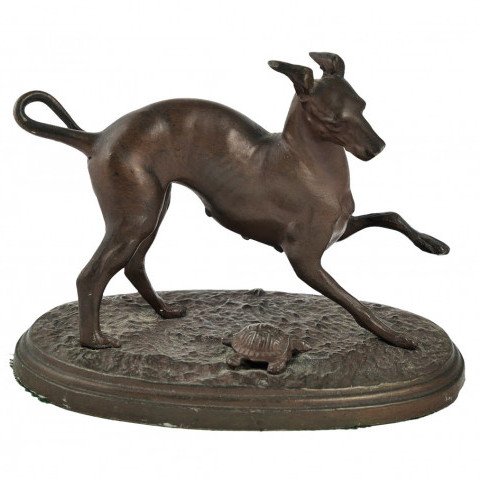Pierre-Jules Mêne was a French sculptor and animalier. He is considered one of the pioneers of animal sculpture in the nineteenth century.
Mêne produced a number of animal sculptures, mainly of domestic animals including horses, cows and bulls, sheep and goats which were in vogue during the Second Empire. He was one of a school of French animalières which also included Rosa Bonheur, Paul-Edouard Delabrierre, Pierre Louis Rouillard, Antoine-Louis Barye, his son Alfred, son-in-law Auguste Caïn and François Pompon.
His work was first shown in London by Ernest Gambart in 1849. Mêne specialized in small bronze figures which explains why none of his works exist as public statuary. His work was a popular success with the bourgeois class and many editions of each sculpture were made, often to decorate private homes. The quality of these works is high, comparable to Barye's. Mêne enjoyed a longer period of success and celebrity than his contemporaries. He is considered to have been the lost-wax casting expert of his time. The lost-wax casting method is sometimes referred to as the cire perdue method.
Mêne died on 20 May 1879 in Paris, France. He is remembered as one of the finest, and certainly the most prolific, animalier sculptors of all time.


